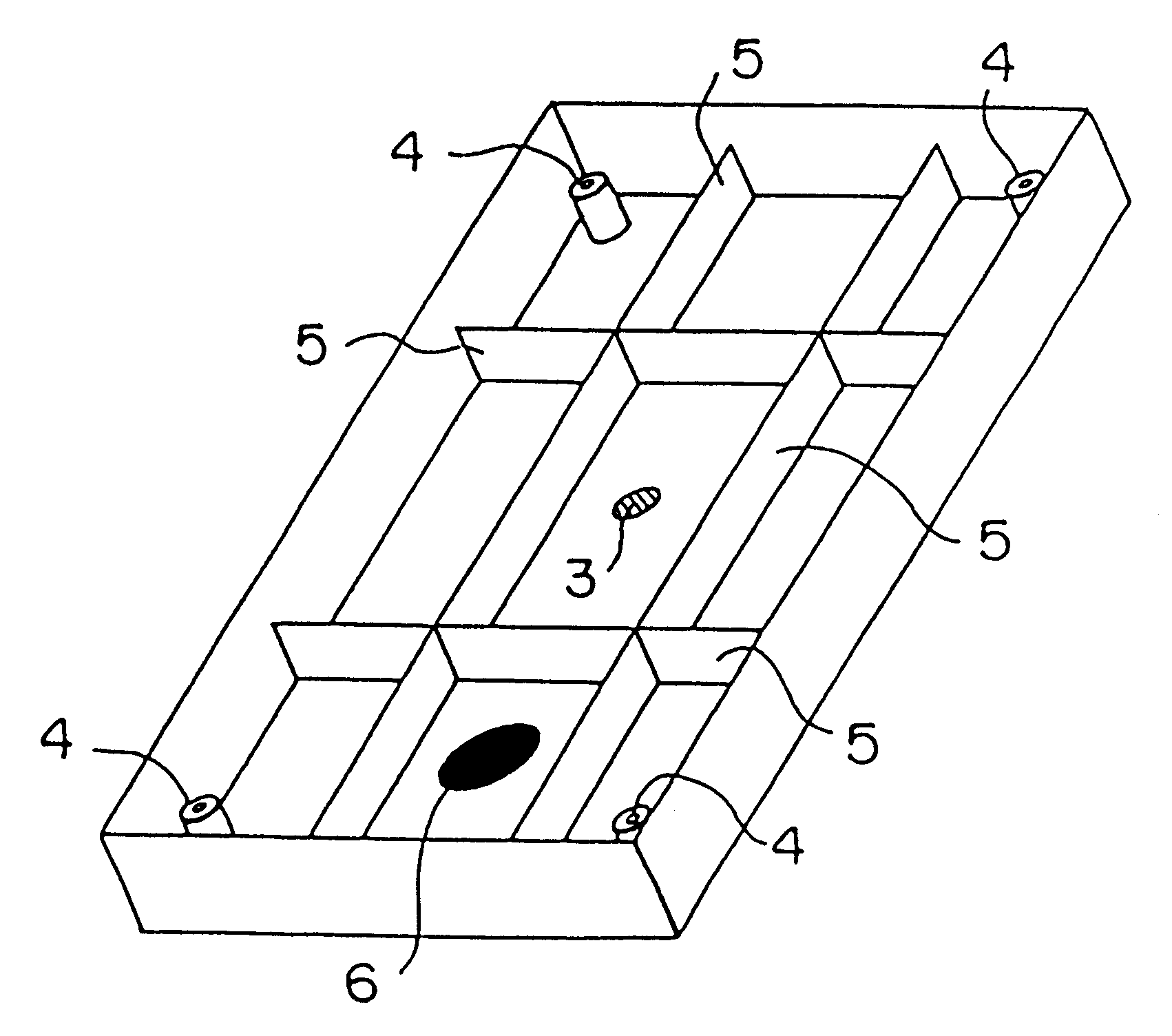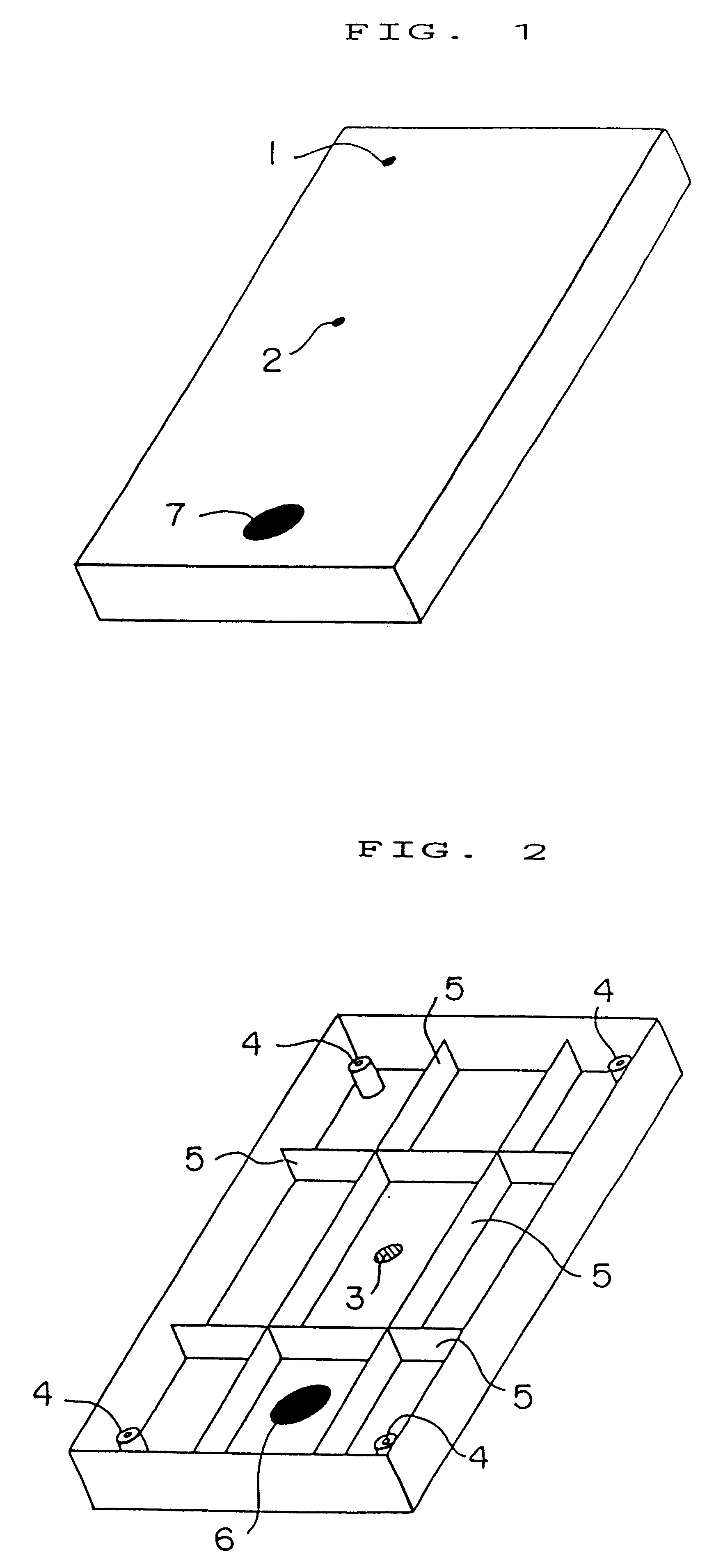Process of injection molding a foamable plastic composition
- Summary
- Abstract
- Description
- Claims
- Application Information
AI Technical Summary
Benefits of technology
Problems solved by technology
Method used
Image
Examples
example 1
The molding was performed using the composition, injection molding machine and mold as mentioned above and further setting the cylinder temperature of the molding machine at 230.degree. C. and the coolant temperature of the mold at 70.degree. C., by the following procedure.
(i) 420 g of the composition was injected into a cavity measuring 590 cc in volume and 2.7 mm in a space between the mold surface (movable mold) in contact with the location indicated at 7 in FIG. 1 and the mold surface (stationary mold) in contact with the location indicated at 6 in FIG. 2, which is abbreviated hereafter as "the thickness at the top portion". The injection was completed after 3 seconds.
(ii) In the course of injection, the reduction of the cavity volume was started 1.5 second after injection and completed after 2 seconds so that the thickness at the top portion of the cavity became 1.7 mm and the volume became 470 cc.
(iii) After completion of the reduction in cavity volume, cooling was conducted f...
example 2
The molding was performed by a similar procedure as mentioned in Example 1, except that the injection in step (i) was conducted into a cavity having the volume of 712 cc and the thickness of 3.7 mm at the top portion. There was obtained a molded article having the size of 410 mm in length.times.295 mm in width.times.52.8 mm in height and the volume of 869 cc.
The characteristics and maximum pressure on molding (measured value) of the resultant molded article are shown in Table 1.
example 3
The molding was performed by a similar procedure as mentioned in Example 1, except that in step (i) the reduction of the cavity volume was initiated at the same time as completion of the injection and completed after 2 seconds to give the volume of 470 cc. There was obtained a molded article having the size of 410 mm in length.times.295 mm in width.times.52.8 mm in height and the volume of 869 cc.
The characteristics and maximum pressure on molding (measured value) of the resultant molded article are shown in Table 1.
PUM
| Property | Measurement | Unit |
|---|---|---|
| Percent by mass | aaaaa | aaaaa |
| Weight | aaaaa | aaaaa |
| Composition | aaaaa | aaaaa |
Abstract
Description
Claims
Application Information
 Login to View More
Login to View More - R&D
- Intellectual Property
- Life Sciences
- Materials
- Tech Scout
- Unparalleled Data Quality
- Higher Quality Content
- 60% Fewer Hallucinations
Browse by: Latest US Patents, China's latest patents, Technical Efficacy Thesaurus, Application Domain, Technology Topic, Popular Technical Reports.
© 2025 PatSnap. All rights reserved.Legal|Privacy policy|Modern Slavery Act Transparency Statement|Sitemap|About US| Contact US: help@patsnap.com



